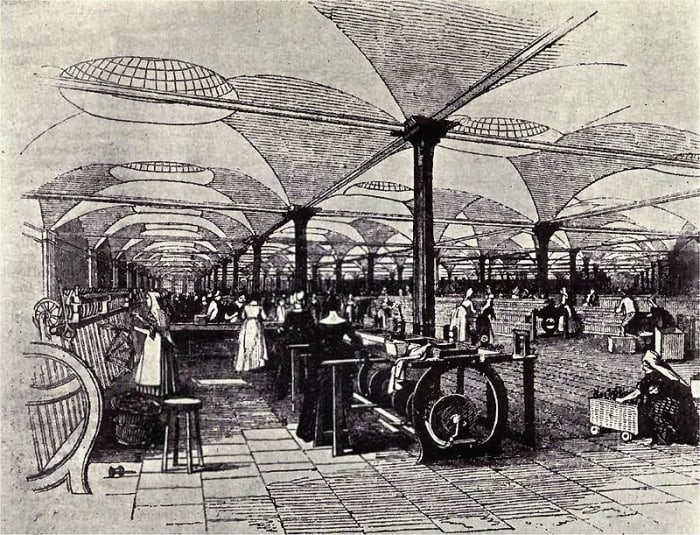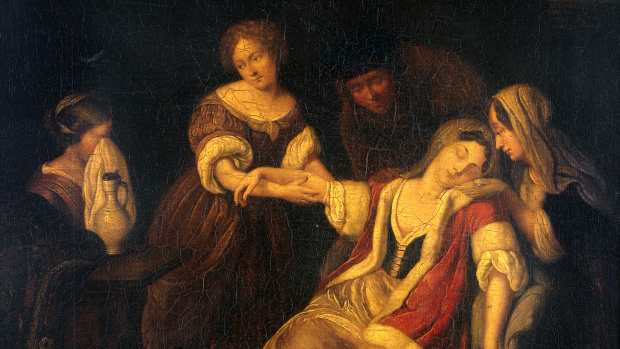10 Facts on the Industrial Revolution
What Was the Industrial Revolution?
The Industrial Revolution is the name given to the enormous changes that took place with technology, farming, mining, manufacturing, and transportation from the middle of the 18th century through to the middle of the 19th century.
These changes had a wide impact, not just affecting people's economic and working conditions, but also their social and cultural lives.
10 Industrial Revolution Facts
- It Began in Britain
- It was one of the Biggest Events in Human History
- Machines Replaced People
- More People Lived in Cities
- Economic Conditions Improved for Most People
- Industrialization Caused New Problems
- Production of Clothing and Fabrics was Transformed
- The Steam Engine Improved Transport and Production
- The Industrial Revolution Created a New Economic System
- Some Countries Have yet to Experience an Industrial Revolution
I explain each one of these facts in more detail below.

Here are 10 facts about the industrial revolution that will make you think.
Public domain image via Pixabay
1. It Began in Britain
The Industrial Revolution began in Great Britain in the second half of the 18th century, with a number of technical innovations, including the invention of the steam engine, as well as new ways to make iron and steel which made them cheaper and easier to produce.
Britain was the birthplace of the Industrial Revolution for three main reasons:
- Britain had lots of coal and iron ore, which was needed to power and make the machines that were required by industrialization.
- It helped that Britain was politically stable.
- Britain was a major colonial power at the time, with the colonies providing both the raw materials for manufacturing and the marketplaces for the manufactured goods to be sold after they had been made.
In the industrial revolution Britain led the world in advances that enabled mass production: trade exchanges, transportation, factory technology and new skills needed for the new industrialised world.
— Lucy Powell
2. It was One of the Biggest Events in Human History
The Industrial Revolution was the most important thing to happen in human history since the time when animals and plants were domesticated.
Before the Industrial Revolution happened, each generation of people produced a roughly similar amount of products to their predecessors and overall economic wealth was fairly stagnant. After industrialization, production began to grow quickly and generally continued to grow.
The Industrial Revolution was another of those extraordinary jumps forward in the story of civilization.
— Stephen Gardiner
3. Machines Replaced People
The main thing that happened during the Industrial Revolution was that machines were developed that could perform many of the jobs and tasks that had previously been done by people. This had social as well as economic consequences.
Instead of people using hand tools to make products at home, factories sprung up to house the new manufacturing machines and the need for human involvement was dramatically reduced. Working practices were increasingly decided according to the needs of the machines. People had to travel to the factories each day, where their time and effort was closely monitored for efficiency.
Many animals were also replaced by machines, particularly horses, which for centuries had been used for transport, farming, and other tasks.
Recommended

Drawing of Marshall's Mills, a flax mill in Holbeck, Leeds, England, showing workers at their machines. The picture is taken from the Penny Magazine Supplement, December 1843. The mill was earlier targeted in the Plug Riots of August 1842.
4. More People Lived in Cities
Before the Industrial Revolution, societies were largely rural and people made things at home. After industrialization, more people lived in cities where goods were mass produced in purpose-built factories. Many people were forced to move to urban areas, where wages were higher, in order to survive economically.
Industrialization also caused a population explosion, thanks to factors such as health care improvements and a more regular food supply.
5. Economic Conditions Improved for Most People
The Industrial Revolution generally brought about much better economic conditions for most people.
Here are some examples:
- More efficient production meant that everyday necessities like clothing, shoes, and household tools were more plentiful and cheaper to buy.
- Health care improved rapidly and children were less likely to die young.
- The increased needs for technical skills and knowledge led to improved education and scientific advances.
- More specialist professionals were needed in the newly industrialized cities and towns, which led to a rapid growth in the middle class and higher wages.
If you go back to 1800, everybody was poor. I mean everybody. The Industrial Revolution kicked in, and a lot of countries benefited, but by no means everyone.
— Bill Gates
6. Industrialization Caused New Problems
Although the overall effects of industrialization were positive for most people, there were many downsides too, including all the pollution and waste that was created as a side effect by the machines and chemicals used in industrial processes. Many modern environmental problems, such as climate change, have their roots in the changes to production and transport brought about by the industrial revolution.
Working practices also became more regimented and many people, including children, worked long hours in factories performing repetitive, and sometimes dangerous or unhealthy jobs. Working more than 12 hours each day was considered normal. The poor and working classes often suffered terrible living conditions with entire families crowded into tiny apartments. Dissatisfaction and poverty regularly resulted in social breakdown, protests, and rioting.
The Luddites
The industrial revolution meant that many artisans saw their traditional livelihoods wiped out by the new machines. The Luddites were a group of English textile artisans who protested against the introduction of labour-replacing machinery from 1811 to 1817 often through sabotage and other forms of resistance. Protests broke out in Nottinghamshire and Northern England and became violent in some instances, with fighting between the protesters and the British Army.
7. Production of Clothing and Fabrics was Transformed
The production of textiles was one of the things that was totally transformed by the Industrial Revolution. Before industrialization, people generally made clothes at home. Merchants would often give the clothes makers the raw materials and essential equipment, and then collect and sell the finished products for them.
Industrialization meant that clothing and fabrics could be mass produced, making them much cheaper than the homemade version. Two inventions in particular made the mass production of textiles possible, those were the spinning Jenny and the power loom.




